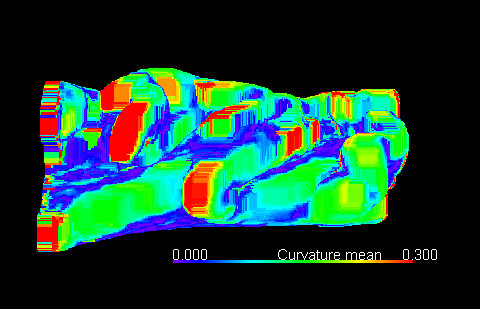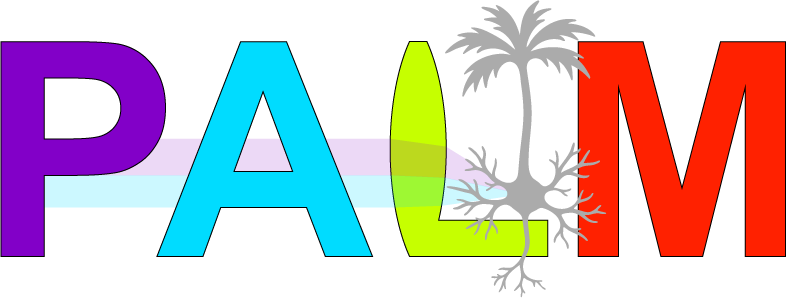The function was developed in collaboration with the Bitplane technical support team and incorporates the Patch Curvature algorithm developed by Dirk-Jan Kroon in MATLAB code. This script was written to evaluate 3D surface curvature of the mouse uterine lumen at preimplantation and implantation stages of pregnancy. 3D curvature measurements were generated by modifying an existing script intended to calculate localized, small area, curvature. The script was modified to calculate the curvature in larger objects, such as the uterus.
The analysis was carried out using the vertices generated in the Surface mode in Imaris. Surface complexity is reduced by evenly reducing the number of vertices to one-tenth of the original number. Using the normals in each axis at each vertex, the radius of the curve formed by connecting neighbor vertices was calculated. Radii calculated with six neighbor vertices are averaged to obtain curvature mean and multiplied by 10 to calculate Cmean. Cmean of the surface can then be displayed as a heat map.
The script also generates a bar graph with total number of vertices within Cmean 0-0.1, 0.1-0.15, 0.15-0.45 and 0.45-0.675. On the bar graph the script calculates a value for folding factor (f), which is the ratio of the Cmean for the highly curved surface (0:125 < Cmean > 0:3), to the least curved surface (0 < Cmean > 0:05). Morphology of uterine luminal segments is thus expressed as the folding factor (f). The script was created in Imaris version 8.1.2 and has been tested in Imaris version 8.4. This script was a part of the publication "Insights from imaging the implanting embryo and the uterine environment in three dimensions", Arora et al (Development, 2016, PMID:27836961).
Dependencies
- Matlab 2015 or newer
- Imaris 8.1 - 8.4
Installation
Point Imaris to the directory containing the .m file:
- Start Imaris
- File > Preferences...
- Select Custom Tools.
- Under XTension Folders click Add...
- A browser window will appear to choose the folder.
Executing the XTension
- Create a surface object in Imaris
- Highlight the surface object and select the gear icon to bring up the available XTensions
- Choose Visualize Surface Curvature
Example Output

A color map of the mean surface curvature (cMean) after the XT has been run. Red indicates areas of hight curvatrue while blue indicaties flat areas ( low curvature).

A histogram of the curvature mean (cMean) values for all vertices in the image on the left. The folding factor is a measure of the extent of overall surface curvature. Please see the linked publication for more details.
